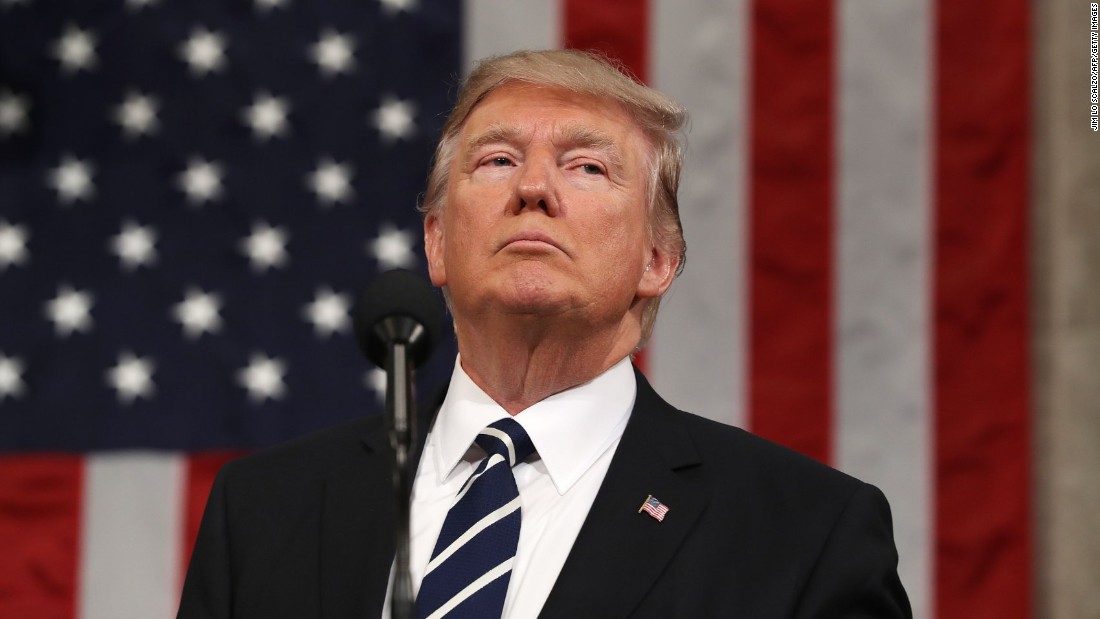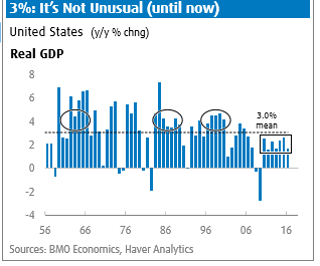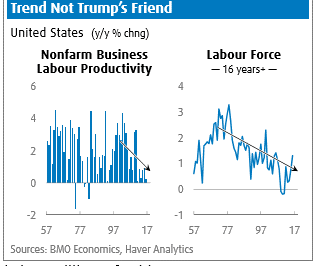Trump’s Optimistic Assumption For U.S. Growth Is Way Too High
“If the president’s agenda were enacted, forecasters on average think long-run gross domestic product growth could rise to 2.3%, a 0.3 percentage point increase from their 2% baseline. Unemployment would average 4.4% under this scenario, instead of 4.5%. Interest rates set by the Federal Reserve would be about a quarter-point higher. Short-term rates would be about 3.1%. So an improvement, but a modest one.” (WSJ, May 12, 2017)
“Markets have clearly been too bullish on Trump…Contrary to what the administration’s budget projections claim, annual economic growth in the US has almost no chance of accelerating from 2% to 3%.” (Nouriel Roubini, Project Syndicate, June 5, 2017)

There are many problems associated with the veracity and the calculations underlying the Trump Administration’s first budget. But one of the most glaring problems is that over the next decade the Trump budget assumes that real growth will average averages 2.8% annually compared to a Congressional Budget Office (CBO) projection of 1.9% and the “Blue Chip” consensus of 2.1%.
A high economic growth assumption is required in order to generate the needed tax revenues to finance the Republican promises of tax cuts combined with increased spending on defense and infrastructure.
Unfortunately for the Administration projections, the potential growth rate in the U.S. has been slowing in recent years (See Sal Guatieri, BMO Capital Focus, May 26). And with a virtually fully employed economy, it is almost impossible for U.S. economic growth to exceed its potential rate over the next decade.
Potential growth is simply the sum of labor force growth and productivity growth. One of the charts indicates that real GDP expanded at about a 3% average annual rate over the past 60 years. But both the labor force and productivity were growing faster in the past than at present. In the past labor force growth averaged 1.5% per annum and productivity growth increased about 2% per year.
However, both components of potential growth have been slowing. Indeed, between 2012 and 2016, labor force growth has averaged only 0.7% per year while productivity growth averaged 0.6%.
In other words, for Trump’s optimistic growth rates to be realized, his action and promises must sharply boost America’s labor force growth and productivity growth. As the following two charts suggest, the trend is not Trump’s friend.


Disclosure: None.



